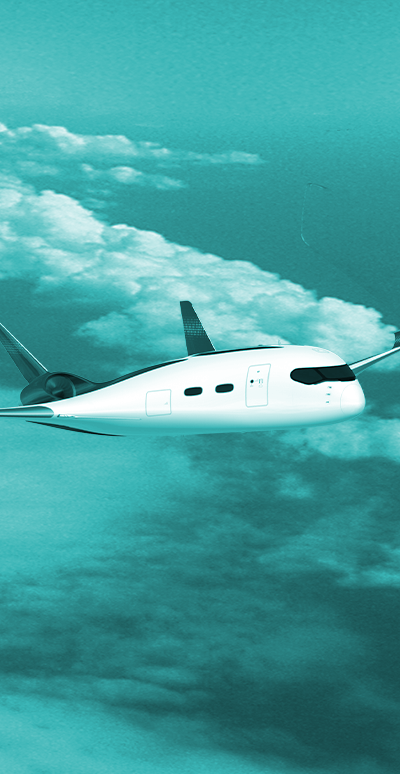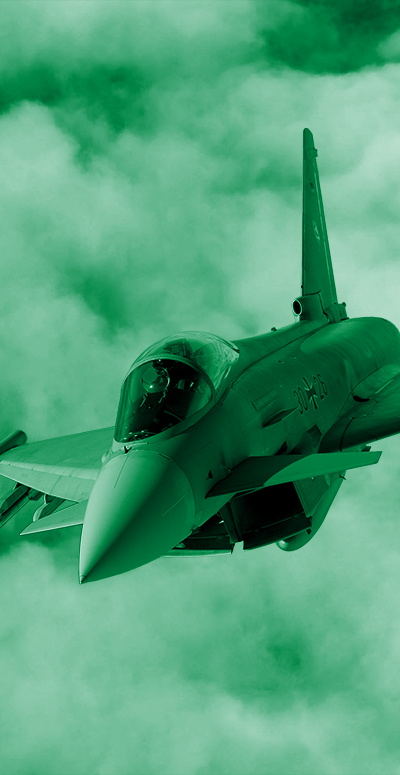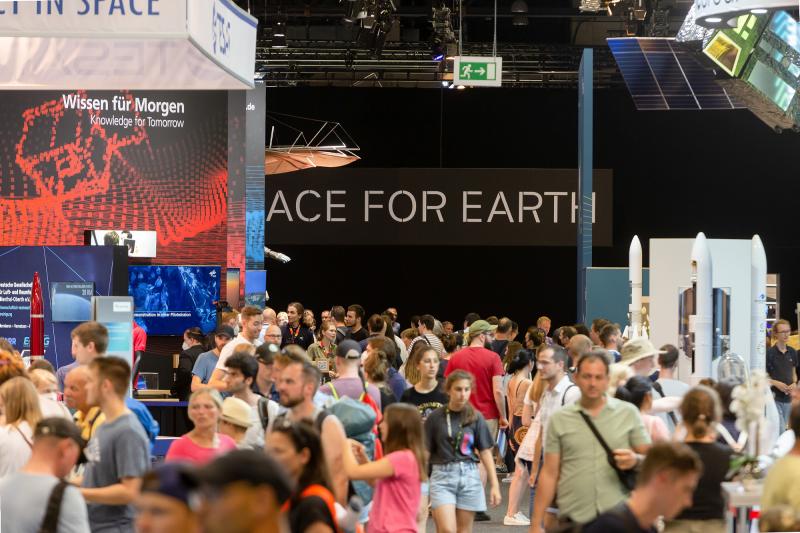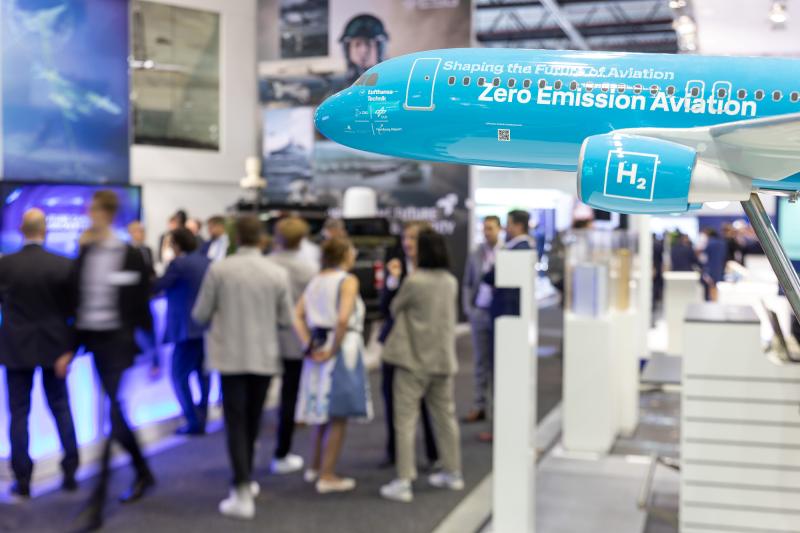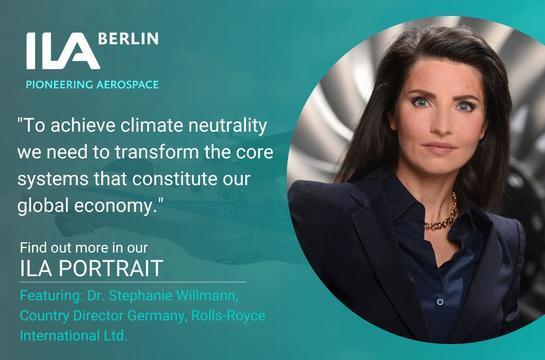The Luftwaffe and its industry partners
An ever-closer alliance for a strong European defence capability
The absolute highlight of the flying display at the ILA Berlin is experiencing the Eurofighter in action. Who could forget the blasting background music, the flaming afterburners and the amazement of the audience when a fighter jet flies by at breathtaking speed? The manoeuvres are simply spectacular. The Eurofighter is powered by two engiges. Each of them can generate a dry thrust of about 60,000 Newton without activating the afterburners. This allows the flagship of the German Air Force to reach more than twice the speed of sound or exactly 2.35 Mach. The multi-role fighter jet, which weighs eleven tonnes without load and fuel, can thus accelerate at incredible speed, achieving a maximum “climb rate” of 315 m/s.
The Eurofighters showcased at the ILA Berlin flight programme are stationed at Rostock-Laage air base. This is one of four Eurofighter bases in Germany. Currently, 138 jets form the backbone of the German Air Force. The Eurofighter represents one of the largest European defence programmes, uniting the partner countries Germany, Great Britain, Italy and Spain. The collaborative programme secures more than 100,000 jobs in 400 European companies - 27,000 of them in Germany alone. A total of 680 Eurofighters have been delivered to nine countries so far. At the ILA Berlin 2022, Spain signed a contract to renew its fleet with 20 new fighter jets.
For the German Air Force, regular maintenance of these flying supercomputers is indispensable. The high operational readiness of the main weapon system of the Bundeswehr is an integral element for the protection of the Federal Republic of Germany, but also for the defence capability of Europe and the NATO alliance. But who oversees this complex system, and where and how are Eurofighters maintained in Germany?
Co-operation between air force and industry is unique in Europe
The Bundeswehr and industry partners repair and maintain the Eurofighter fleet together. At several industry sites, joint teams of air force servicemen and women work side by side with civilian experts from aerospace companies. This was not always the case, however. In the past, the Bundeswehr and Eurofighter were simply client and contractor. The customer paid and the manufacturer delivered. In the Air Force, this strict separation has been abolished - resulting in considerable advantages for both sides. Since 2003, the Eurofighter System Support Centre (SUZ EF), a co-operation between Airbus and the German Air Force in Manching near Ingolstadt, has been providing operational, technical and logistical support for fighter jets that have entered service. The SUZ EF is thus tasked with providing continuous industry support and advice for all technical matters as well as software maintenance and optimisation for the entire system.
The Eurofighter System Support Centre at Airbus Defence & Space offers specialist support - around the clock
Changes to the Eurofighter hardware and software are also co-ordinated and carried out in Manching. The SUZ EF is part of the International Weapon System Support System (IWSSS), which was set up by the four Eurofighter nations in tandem with their industrial partners. Among others, it offers a user help desk that is available around the clock. There, a qualified team of engineers for system analysis and software maintenance provides support seven days a week. On the technical side, the crew has access to all the necessary equipment and resources required to make changes to the software or hardware of the overall system.
Maintaining the flight operations of the Eurofighter fleet at a high level requires extensive technical expertise. In some cases, maintenance and repair can even be carried out remotely. This solves a crucial problem. During missions abroad, technicians from the industrial partners are not deployed with the aircraft to the area of operations. During these missions , however, the constant operational readiness of the complex combat systems is more crucial than ever. Thanks to the know-how German Air Force engineers acquire while working alongside experts from manufacturers, airmen and woman can carry out a good part of the technically demanding services and repairs on their own. In addition, the Eurofighters have numerous interfaces (maintenance ports) with networked data connections for remote maintenance. These allow for remote access to cockpit settings, weapon guidance systems and thrusters – to name a few examples.
Co-operation between the German armed forces and MTU Aero Engines ensures cost-effective engine maintenance
The German Air Force began cooperating with MTU in Erding near Munich as early as 2022. The group supports the Bundeswehr in maintaining the EJ200 engines of the Eurofighter, but also the RB199 engines of the older Tornado fighter jet and the MTR390 of the Tiger helicopter. MTU's integrated maintenance services also include spare-part management and forecasting as well as damage analysis along with product monitoring and quality assurance.
The advantages of this close co-operation are clear. Formerly, the Air Force maintained part of its engines in house, while the remainder were sent to the industry side for maintenance and repairs. However, this meant that all capacities and resources had to be available in two places. Combining maintenance and repair effectively saves costs. As Michael Hergeth, head of engine maintenance and new construction at MTU in Erding, emphasises: “Our goals are absolutely aligned: to get the engines back onto the wings – or in the case of the Tiger: under the rotors – in the best possible quality at the lowest possible cost as quickly as possible”.
The successful model of close co-operation offers „win-win” solutions
One of the most important advantages of continuous co-operation is the increased ability to plan maintenance cycles. Before entering into a close collaboration with the industry, , the German Armed Forces delivered its engines for repair at irregular intervals. Today, special teams from Airbus in Manching or MTU in Erding deal with the systems entrusted to them on a daily basis. Both industry partners now know exactly when maintenance is due. Predictive maintenance creates further planning security – including in financial terms.
The Federal Ministry of Defence explicitly highlighted the outstanding results of this Performance-Based Logistics (PBL) approach in its “Material Readiness Report II/2021”. The close co-operation with the industry partners significantly increased the availability of spare and replacement parts as well as the availability of weapon systems. The Eurofighter achieved exemplary “readiness rates” of over 80 % on a weekly average, which corresponds to highest international standards..
The integrated co-operation between the Bundeswehr and companies also promotes research and development activities. Since IT infrastructure and research funds can be shared in a partnership, investment volumes are reduced for both sides. The findings are also available to both partner – industry and armed forces. The Eurofighter is another example of this: among the 38 fighter jets from the Quadriga programme (Tranche 4), which will be delivered to the German Air Force by 2030, there are four so-called “instrumented” aircraft. Equipped with additional sensors, these fighter jets collect important data during test runs - for example on material stress. This allows engineers, scientists and soldiers in the “National Test & Evaluation Centre Eurofighter” to continue to develop and improve the entire weapon system. The analyses not only benefit the industry; the Air Force also has access to these specially “wired” Eurofighters and draw on their test data for its own purposes.
Holistic networking of air force, industry and research
Furthermore, there are industry co-operation projects with universities to integrate further external perspectives: Airbus maintains a Global University Partnership Programme (AGUPP), which was most recently joined by the University of Stuttgart. This partnership is deigned to prepare students even better for careers in the aerospace industry. With the Institute of Aero Engines and Turbomachinery (IFAS) at the Technical University of Braunschweig and the Institute of Turbomachinery and Fluid Dynamics (TFD) at Leibniz University Hannover, MTU also counts with important partners for gaining scientific insights and exchanging ideas. In the same way, progress is also being made in the field of maintenance - for example in the “Maintenance, Repair & Overhaul” competence centre founded by MTU at Leibniz Universität Hannover.
Creating these connections was also a central topic at ILA Berlin 2022’s Forum Air. Digitalisation, as Lieutenant General Ansgar Rieks put it, is not a buzzword in the Bundeswehr, but the necessary basis for optimally coordinating the interaction of all players involved in the weapon system. According to the Deputy Inspector of the Air Force, industry and the armed forces must work closely with experts from a host of fields to address all technological and military challenges – right down to the emerging ethical issues of weapon system deployment. For the Bundeswehr, close networking with industrial partners is therefore the central element in strengthening the know-how of its soldiers and meeting the requirements of future weapon systems. This is particularly important, as digital system requirements continue to evolve with each series. The Eurofighter constitutes the economic and technological gateway to the sixth-generation air combat system: the Future Combat Air System or FCAS. Far from the traditional image of the standalone fighter-jet, the FCAS – which is to be rolled out in 2040 as part of a joint defence programme between Germany, France and Spain – will consist of a manned fighter jet (Next Generation Fighter) and an unmanned escort aircraft (Remote Carrier) which will be connected via an intelligent “Combat Cloud”.
